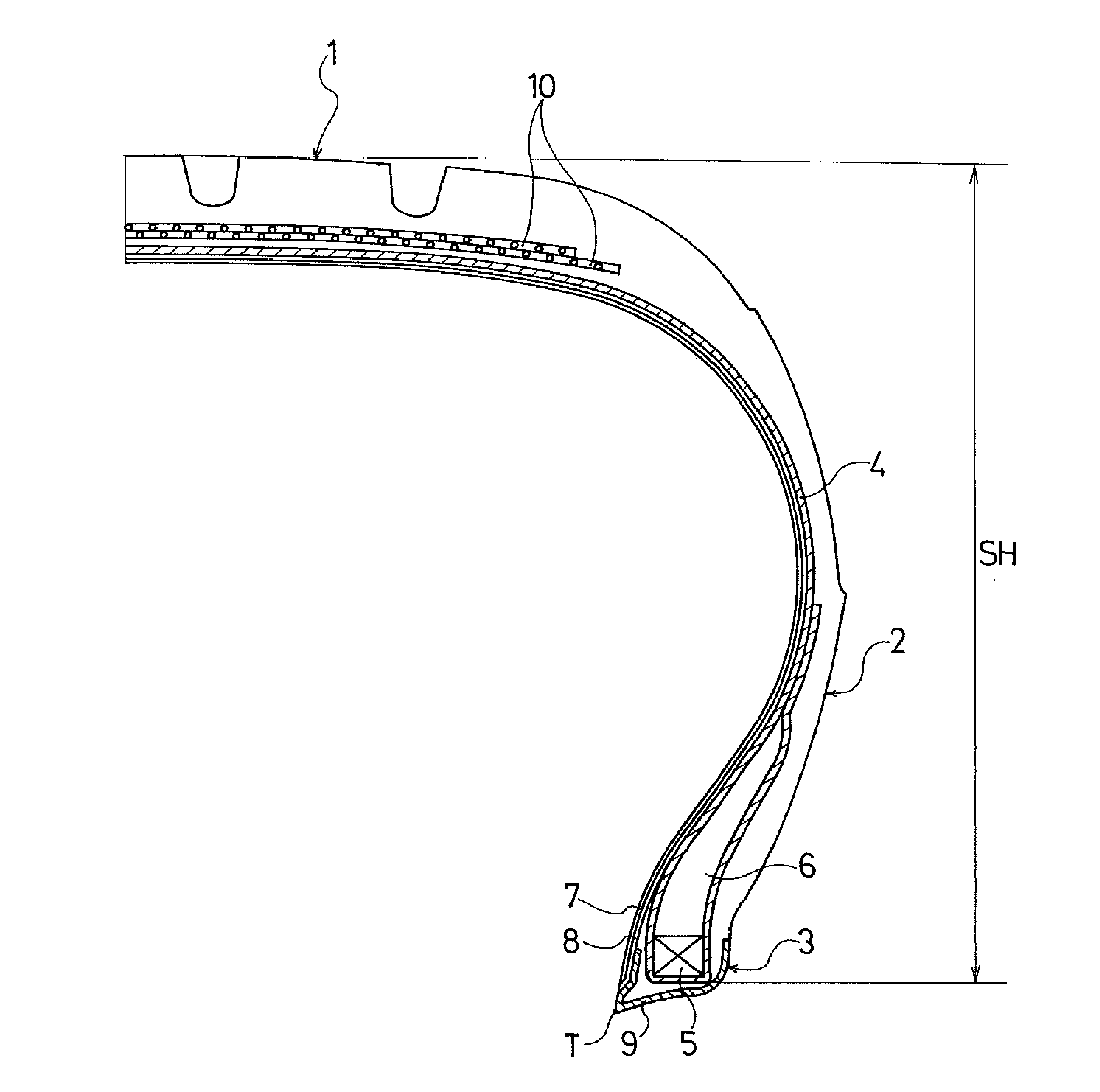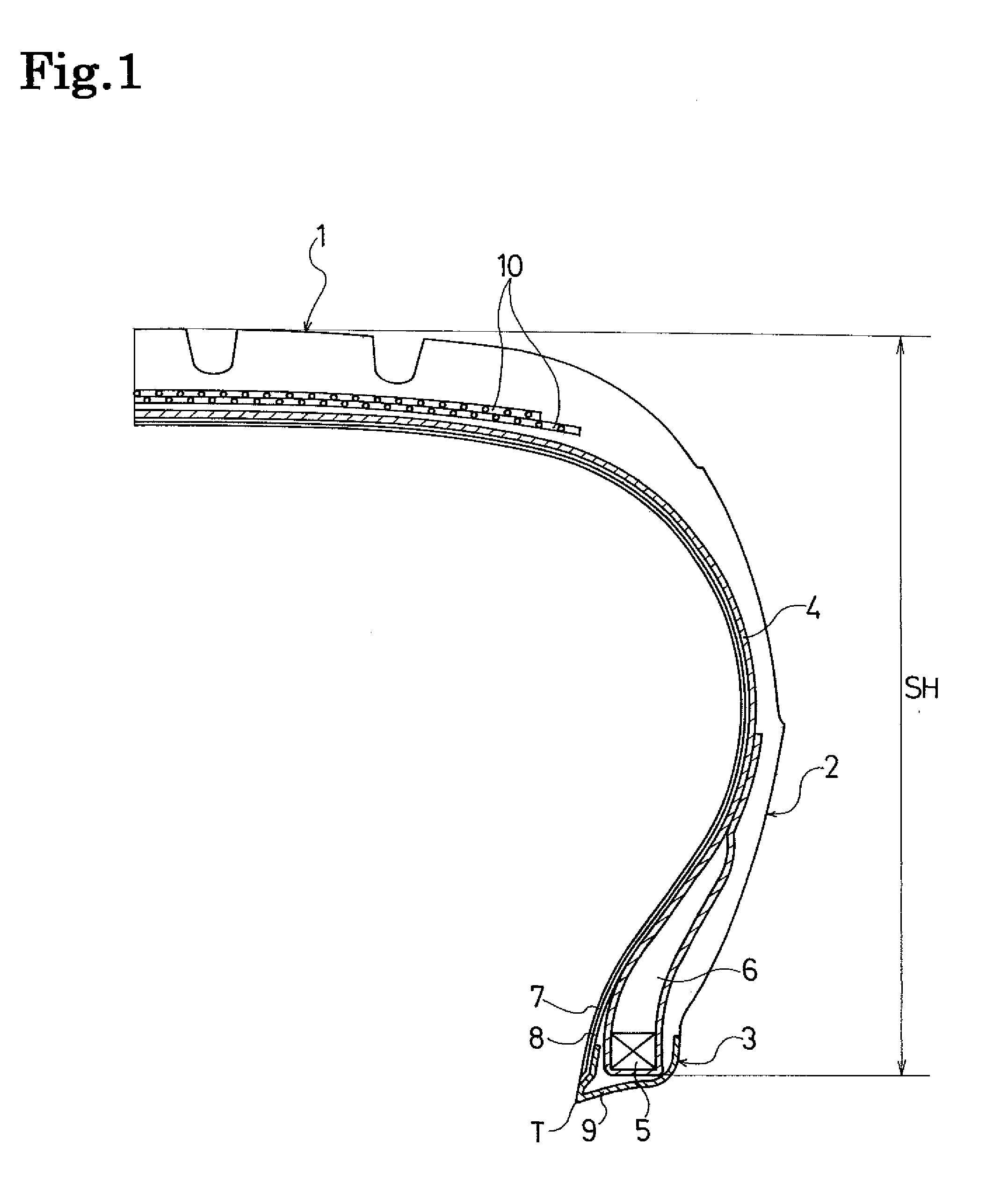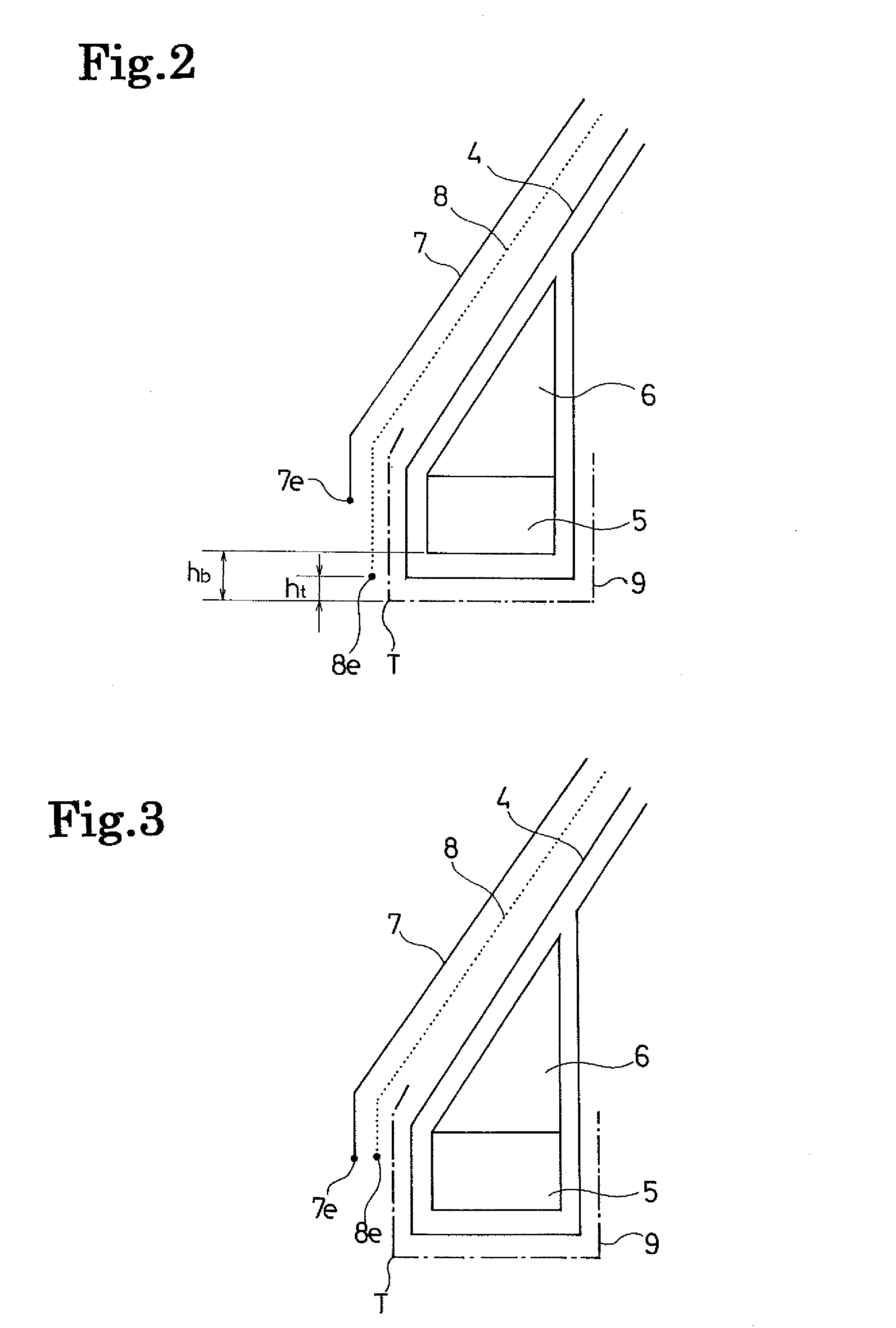Pneumatic tire
a pneumatic tire and tire body technology, applied in the field of pneumatic tires, can solve problems such as curing failure, and achieve the effects of preventing curing failure, preventing air permeation from failing, and high rigidity
- Summary
- Abstract
- Description
- Claims
- Application Information
AI Technical Summary
Benefits of technology
Problems solved by technology
Method used
Image
Examples
examples
[0037]Pneumatic tires of Conventional Example and Examples 1 to 5 were prepared as follows. Each tire had a tire size of 225 / 40R18. Each tire included: a carcass layer laid between a pair of bead parts; an inner liner layer disposed at a tire cavity side of the carcass layer; a tie rubber layer interposed between the carcass layer and the inner liner layer; and chafers protecting the respective bead parts, an end portion on a tire cavity side of each chafer being inserted between the carcass layer and the inner liner layer. The inner liner layer was formed of a thermoplastic elastomer composition containing a blend of a thermoplastic resin (nylon 6,66) and an elastomer (brominated butyl rubber). The arrangement of the tie rubber layer and the chafers was made different among these examples. Note that: the thickness of the inner liner layer was 50 μm; the thickness of the tie rubber layer was 500 μm; and the thickness of the chafers was 0.7 mm.
[0038]In the tire of Conventional Exampl...
PUM
 Login to View More
Login to View More Abstract
Description
Claims
Application Information
 Login to View More
Login to View More - R&D
- Intellectual Property
- Life Sciences
- Materials
- Tech Scout
- Unparalleled Data Quality
- Higher Quality Content
- 60% Fewer Hallucinations
Browse by: Latest US Patents, China's latest patents, Technical Efficacy Thesaurus, Application Domain, Technology Topic, Popular Technical Reports.
© 2025 PatSnap. All rights reserved.Legal|Privacy policy|Modern Slavery Act Transparency Statement|Sitemap|About US| Contact US: help@patsnap.com



